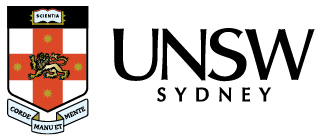Population data is available for every year and country from UN Population data. The dataset, downloaded in November 2024, was last updated by the UN on 16th October 2024. The medium-variant is a widely used scenario in demographic forecasting, assuming moderate levels—neither exceptionally high nor exceptionally low—of fertility, mortality, and migration. This estimate/projection provides a balanced perspective on future population trends, representing a middle-of-the-road scenario. There are no missing values for the population data from the source.
UN GDP and OECD R&D data were used to calculate the ARTU Top 200 by GDP and ARTU Top 200 by R&D indicators. GDP and R&D data was only available up to 2022 for GDP and 2021 for R&D as of December 2024 with the exception of Canada that had 2022 R&D data. Countries with missing data from 2012 to 2021 were estimated using linear interpolation (i.e., using the closest known values to estimate the missing middle value). R&D Data for 2022 and 2023 were extrapolated from the most recent available data, without a formal estimation process.
Example of estimation using Australia OECD R&D dataset (decimal points removed, $billion USD): Year 2011, R&D value = 21522 Year 2013, R&D value = 22441 Year 2015, R&D value = 21157 Year 2017, R&D value = 21236 Year 2019, R&D value = 21738 To get the missing value for 2012, linear interpolation is applied using 2011 and 2013 data as per formula below. Year 2012 = (Year 2011 (known) + Year 2013 (known))/2 = (21522 + 22441)/2 = 21981 Future years are extrapolated from the most recent available data, without a formal estimation process. Year 2020 = 21738 Year 2021 = 21738 Year 2022 = 21738 Year 2023 = 21738 Year 2024 = 21738
ARTU utilises UN data for population & GDP and OECD data for R&D expenditure as they represent the most complete and robust datasets available to the public. Other data sources such as World Bank/IMF were considered but did not have the same coverage or indicators as UN or OECD data and were therefore not used for ARTU.
Population: https://data.un.org/Data.aspx?q=population&d=PopDiv&f=variableID%3a12
GDP: http://data.un.org/Data.aspx?d=SNAAMA&f=grID%3a101%3bcurrID%3aUSD%3bpcFlag%3a0
R&D: https://data.oecd.org/rd/gross-domestic-spending-on-r-d.htm
Note both GDP and R&D data is represented by $billions USD.
